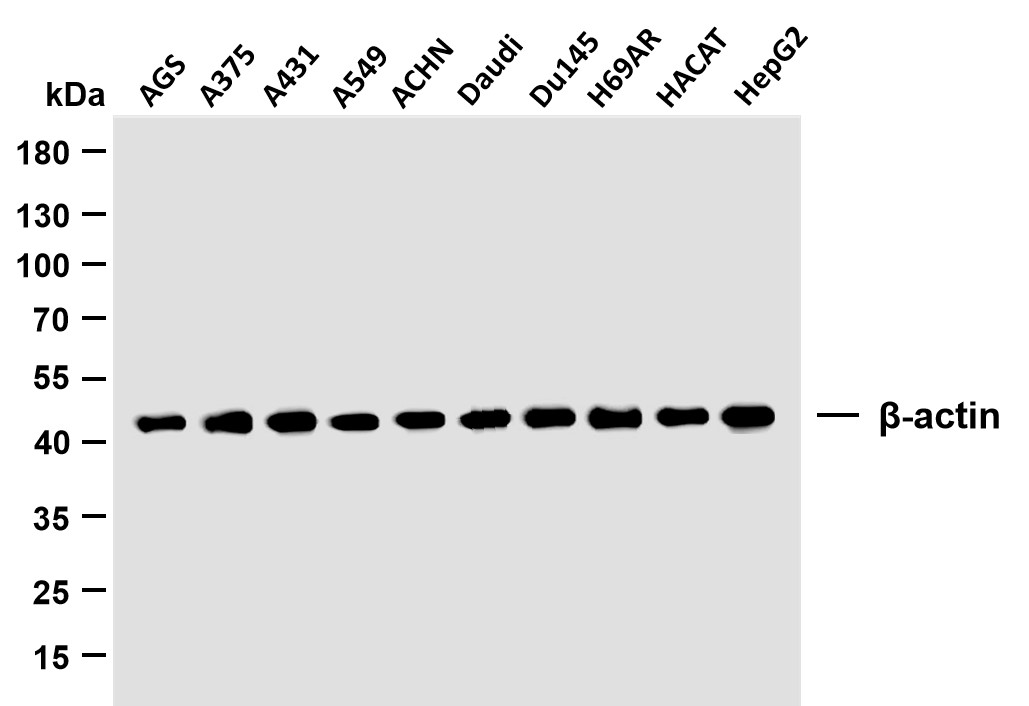
主要信息
Target
PEX6
Host Species
Rabbit
Reactivity
Human, Rat, Mouse
Applications
WB, ELISA
MW
107kD (Observed)
Conjugate/Modification
Unmodified

货号: YN1038
规格
价格
货期
数量
200μL
¥3,780.00
现货
0
100μL
¥2,300.00
现货
0
40μL
¥960.00
现货
0
加入购物车


已收藏


收藏
详细信息
推荐稀释比
WB 1:500-2000; ELISA 1:5000-20000
组成
Liquid in PBS containing 50% glycerol, and 0.02% sodium azide.
特异性
PEX6 Polyclonal Antibody detects endogenous levels of protein.
纯化工艺
The antibody was affinity-purified from rabbit antiserum by affinity-chromatography using epitope-specific immunogen.
储存
-15°C to -25°C/1 year(Do not lower than -25°C)
浓度
1 mg/ml
实测条带
107kD
修饰
Unmodified
克隆性
Polyclonal
同种型
IgG
相关产品
抗原&靶点信息
免疫原:
Synthesized peptide derived from human protein . at AA range: 480-560
展开内容
特异性:
PEX6 Polyclonal Antibody detects endogenous levels of protein.
展开内容
基因名称:
PEX6 PXAAA1
展开内容
蛋白名称:
Peroxisome assembly factor 2 (PAF-2) (Peroxin-6) (Peroxisomal biogenesis factor 6) (Peroxisomal-type ATPase 1)
展开内容
背景:
This gene encodes a member of the AAA (ATPases associated with diverse cellular activities) family of ATPases. This member is a predominantly cytoplasmic protein, which plays a direct role in peroxisomal protein import and is required for PTS1 (peroxisomal targeting signal 1, a C-terminal tripeptide of the sequence ser-lys-leu) receptor activity. Mutations in this gene cause peroxisome biogenesis disorders of complementation group 4 and complementation group 6. Several transcript variants encoding different isoforms have been found for this gene. [provided by RefSeq, Oct 2015],
展开内容
功能:
Disease:Defects in PEX6 are a cause of Zellweger syndrome (ZWS) [MIM:214100]. ZWS is a fatal peroxisome biogenesis disorder characterized by dysmorphic facial features, hepatomegaly, ocular abnormalities, renal cysts, hearing impairment, profound psychomotor retardation, severe hypotonia and neonatal seizures. Death occurs within the first year of life.,Disease:Defects in PEX6 are the cause of peroxisome biogenesis disorder complementation group 4 (PBD-CG4) [MIM:601498]; also known as PBD-CGC. PBD refers to a group of peroxisomal disorders arising from a failure of protein import into the peroxisomal membrane or matrix. The PBD group is comprised of four disorders: Zellweger syndrome (ZWS), neonatal adrenoleukodystrophy (NALD), infantile Refsum disease (IRD), and classical rhizomelic chondrodysplasia punctata (RCDP). ZWS, NALD and IRD are distinct from RCDP and constitute a clinical continuum of overlapping phenotypes known as the Zellweger spectrum. The PBD group is genetically heterogeneous with at least 14 distinct genetic groups as concluded from complementation studies.,Function:Involved in peroxisome biosynthesis. Required for stability of the PTS1 receptor. Anchored by PEX26 to peroxisome membranes, possibly to form heteromeric AAA ATPase complexes required for the import of proteins into peroxisomes.,similarity:Belongs to the AAA ATPase family.,subcellular location:Associated with peroxisomal membranes.,subunit:Interacts directly with PEX26 and PEX1. Mediates the indirect interaction between PEX1 and PEX26.,
展开内容
细胞定位:
Cytoplasm. Peroxisome membrane . Cell projection, cilium, photoreceptor outer segment . Associated with peroxisomal membranes. Localized at the base of the outer segment of photoreceptor cells (PubMed:26593283). .
展开内容
组织表达:
Expressed in the retina, at higher levels in the photoreceptor layer at the joint between the outer and inner segments.
展开内容
研究领域:
>>Peroxisome
展开内容
文献引用({{totalcount}})
货号: YN1038
规格
价格
货期
数量
200μL
¥3,780.00
现货
0
100μL
¥2,300.00
现货
0
40μL
¥960.00
现货
0
加入购物车


已收藏


收藏
Recently Viewed Products
Clear allToggle night Mode
{{pinfoXq.title || ''}}
Catalog: {{pinfoXq.catalog || ''}}
Filter:
All
{{item.name}}
{{pinfo.title}}
-{{pinfo.catalog}}
主要信息
Target
{{pinfo.target}}
Reactivity
{{pinfo.react}}
Applications
{{pinfo.applicat}}
Conjugate/Modification
{{pinfo.coupling}}/{{pinfo.modific}}
MW (kDa)
{{pinfo.mwcalc}}
Host Species
{{pinfo.hostspec}}
Isotype
{{pinfo.isotype}}
产品 {{index}}/{{pcount}}
上一个产品
下一个产品
{{pvTitle}}
滚轮缩放图片
{{pvDescr}}



















